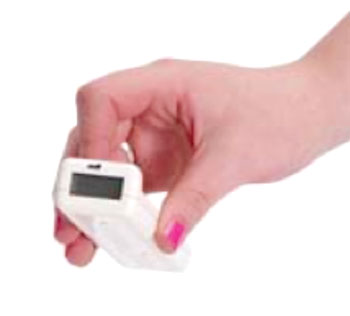Real-Time Radiation Monitor Designed to Decrease Radiation Exposure for Medical Workers
By MedImaging International staff writers
Posted on 05 Jan 2015
A real-time radiation monitor has been developed that signals by beeping in response to radiation exposure during cardiac-catheterization procedures. The device significantly reduces the amount of exposure that medical workers receive.Posted on 05 Jan 2015
In a randomized study, the researchers divided 505 patients undergoing either diagnostic coronary angiography or percutaneous coronary intervention, such as stent placement, into two groups. In 50% the procedures, medical workers used the current gold standard for radiation monitoring, which is a dosimetry badge that is worn by a medical worker for one month and then sent off for the cumulative radiation dose to be read. In the other half, medical workers wore a device called Bleeper Sv, which beeps approximately once every 15 minutes in response to low background radiation, and beeps once every 20 seconds when exposure is higher, or continuously, if it is very high. The beeper was developed by Fluke Biomedical (Everett, WA, USA).

Image: The Bleeper Sv real-time radiation monitor decreases radiation exposure for medical personnel (Photo courtesy of Fluke Biomedical).
In cases where the medical workers wore the device that provides real-time auditory feedback, radiation exposure was consistently slashed by approximately one-third. “Radiation is invisible,” said Dr. Emmanouil Brilakis, associate professor of internal medicine at the University of Texas (UT) Southwestern Medical Center (Dallas, USA), and senior author of the study, which was published in the December 16, 2014, issue of the journal Circulation: Cardiovascular Interventions. “Use of a radiation detection device can provide real-time ‘visualization’ of radiation exposure, enabling operators to take actions to reduce radiation exposure.”
Medical workers can take actions to reduce radiation exposure by reducing the frame rate (the number of X-ray images captured per second to create a “movie” of the coronary arteries), decreasing fluoroscopy time, repositioning the patient, repositioning the medical worker, adjusting the position of the radiation shield, and using further shielding. “Using devices that provide real-time radiation-exposure feedback can help the operator adopt safer radiation practices,” said Dr. Brilakis, who is also director of the cardiac catheterization laboratories at the VA North Texas Health Care System (Dallas, USA). “In our study, this was achieved in a real-life setting among unselected patients using a low-cost device that can be used with any X-ray system.”
Physicians and other medical workers in cardiac-catheterization units will in all probability participate in hundreds of procedures per year. The dose limit for occupational exposure is 20 mSv per year for five years, but no dose is safe and all doses are considered to contribute to cancer risk. “It has been shown that people who are chronically exposed to radiation in cardiac catheterization labs are more likely to develop left-sided brain tumors,” concluded Dr. Brilakis. “The reduction in operator exposure observed in our study is likely to translate into a decreased risk for long-term adverse clinical events.”
Related Links:
University of Texas Southwestern Medical Center
Fluke Biomedical














